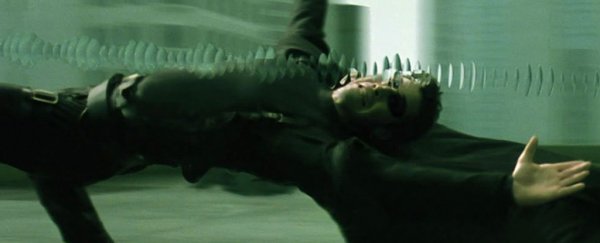Our brains are pretty good at filling in the blanks when it comes to our sense of perception - often to the point we have a mental movie of an entire event before it even finishes unfolding.
New research has shown this 'mind's eye' prediction of future motion occurs at a higher speed than in reality - a trait we could have evolved to compensate for our relatively sluggish sense of vision.
Unless you have a condition called aphantasia, which makes it impossible to summon up mental images, you'll be familiar with how your visual cortex builds imagined scenes in your mind.
Until now, most research on the imagery that arises in anticipation of an ongoing event - or "preplay" - has been conducted on animals. This new study takes a close look at what's going on in the visual cortex of humans.
Researchers from Radboud University in the Netherlands put 29 university students into a functional magnetic resonance imaging (fMRI) scanner to map their brain activity as they watched a white dot step across a screen.
Participants were asked to watch the same animation repeat 108 times over a number of short sessions. By the end, their brains were very well primed to know what to expect as the dot travelled left to right and right to left in about half a second.
Now they had built in these expectations, the participants watched a random sequence of 24 'dot' movies. Some were just like the previous ones, with the dot moving across the screen, while others had the dots in the starting or ending positions only, plus a few 'oddball' trials delaying the final step in the movement sequence.
The entire experiment was conducted twice with each student, while another four volunteers acted as controls to rule out residual effects between the trials.
A series of fMRI scans were taken of their brains at ultra-fast speed to capture the blood flow in certain tissues.
As the volunteers watched the dots jump, a corresponding part of their visual cortex lit up with each step.
When shown just the starting dot, the same parts of the brain were activated, mentally completing the sequence in anticipation, though at twice the speed of the actual dot sequences.
The diagrams below give you some impression of how the brain scans of watching the moving dots compared to the scans of the volunteers when they were simply anticipating movement - in 'preplay'"
 Ekman etal, Nature Communications
Ekman etal, Nature Communications
That isn't to say we can put a number on how fast 'fast-forward' is, since the fMRI scanner can only take snapshots at a certain speed, even on ultra-fast.
But it does suggest that we have a way to quickly visualise relatively simple movements, such as a ball rushing at our head, in at least half the time it would take for the event to occur.
Previous studies have estimated a need to look at an image for at least 150 milliseconds in order for our brains to capture enough information to make a judgement on what to look at next.
Then a study a few years ago found we can actually accomplish the task a lot faster - in just 13 milliseconds - at the risk of making some mistakes. That's quick, though processing lots of visual information quickly comes at a cost of chewing up more energy.
Nonetheless, it still means we're living up to a tenth of a second in the past, which could make all the difference between life and death.
It's possible that we evolved this ability to predict the future in fast-forward to save time and effort, helping us act sooner.
"Imagine you are standing at a road, a car is approaching and you need to decide "Do I cross, or do I wait for the car to pass first?"," lead researcher Matthias Ekman told MailOnline.
"Our study suggests that our visual system can fast-forward the trajectory of the car and thereby help us with our decision whether to wait or not."
The research calls into question the role of our visual cortex not just in perceiving current events, but in using past experiences to build perceptions of future ones.
"Thus, the notion of preplay processes in the visual system blurs the boundaries between memory and perception, and underscores the integrated nature of these two cognitive faculties," the researchers write in their report.
It pays to remain a little sceptical about conclusions on any relationship between higher blood-flow across specific bits of the brain and the part's role in a cognitive task, especially while questions remain on how closely linked metabolism is with the neural activity.
But if you've ever experienced the illusion of time standing still, you'll know our brains have some weird and remarkable tricks to cope with a fast paced world rushing past our eyes.
This research was published in Nature Communications.
